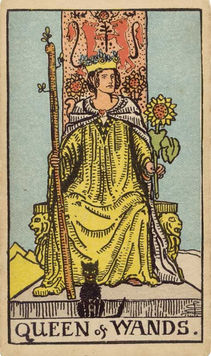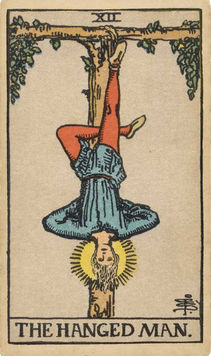
Rider Waite Deck
Today, the most popular tarot deck in the world is considered to be the Rider-Waite deck, created in collaboration with artist Pamela Colman Smith.

Why Is It So Popular?
Waite and Pamela revolutionized tarot, which is why their deck is so popular. All classic decks before Waite's were divided into Major and Minor Arcana. The Major Arcana contained symbolic images, and people could easily interpret their meanings, but the Minor Arcana only had numbers and images of objects symbolizing the suit. Therefore, to work with tarot, a person needed knowledge of the symbolism of numbers in the hermetic system, numerology, and astrology to understand what was hidden behind a 3, a 5, or any other card in the Minor Arcana. Waite and Pamela found symbolic images for the Minor Arcana, making tarot accessible even to those not initiated into ancient knowledge.
Compare how clear the meaning of the Three of Swords became after Waite and Pamela added the image of a heart, to how difficult it is to understand the meaning of the same card in the Marseille Tarot, which was used long before Waite.

Why does tarot work?
There is a common belief that tarot is based on magic, and only people with unique gifts of foresight or clairvoyance can work with tarot. Our team believes this is not the case!
When we look at tarot as one of the oldest complete systems of archetypes and compare it with modern psychological research, we see many similarities in the approaches and techniques used by both tarot readers and psychologists.
Tarot cards are based on centuries-old traditions, representing a collection of archetypal images and symbols that embody universal human experiences and wisdom. These archetypes reflect fundamental aspects of human nature and life situations, similar to what we use today in movies, books, and TV shows.


Archetypes and Carl Jung
Carl Gustav Jung, the Swiss psychiatrist and founder of analytical psychology, made significant contributions to the study of archetypes. According to Jung, archetypes are innate, universal patterns of behavior and thinking that reside in the collective unconscious of every individual. Jung believed that archetypes manifest in myths, dreams, the arts, and, of course, in tarot cards.
Jung had a keen interest in tarot and viewed it as a means to access unconscious processes. He believed that tarot could serve as a tool for self-discovery and understanding internal conflicts and aspirations. For Jung, tarot cards represented a symbolic language that helps individuals interpret and become aware of their inner experiences and thoughts.
GALLERY
Download App
Just for you, we’ve created an app where you can learn the meaning of any card from the Rider-Waite deck.
You can choose a card from the gallery if you don't have a deck, or scan a card from your favorite Rider-Waite deck and discover its meanings in the contexts of business, relationships, personality traits, and get advice or warnings.
Additionally, we've included our own Amber Tarot and Everyday Women Tarot decks in the app!
And the best part: we’ve gathered the meanings of all cards not only in their upright positions but also in reverse! No more doubts about how to read reversed cards!


























